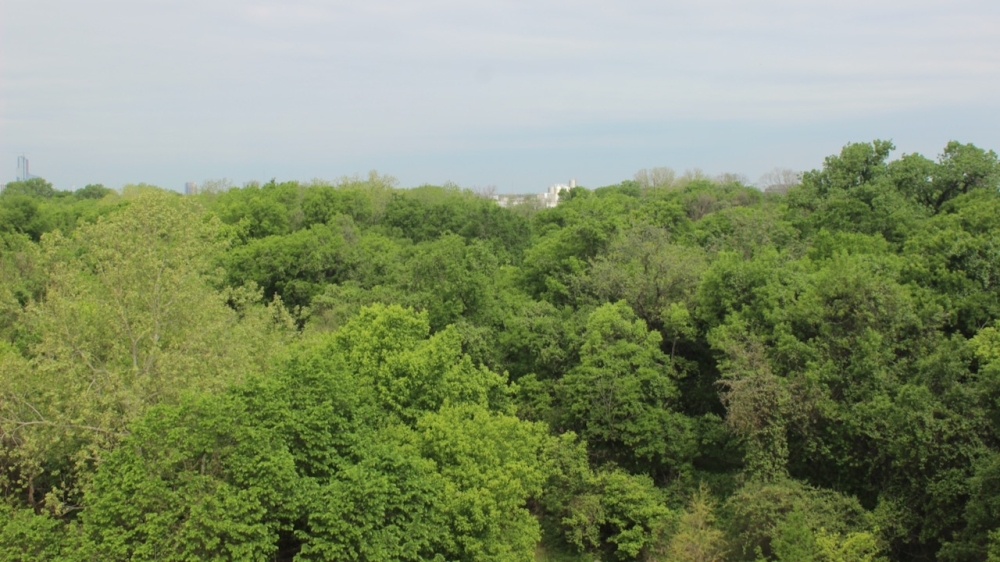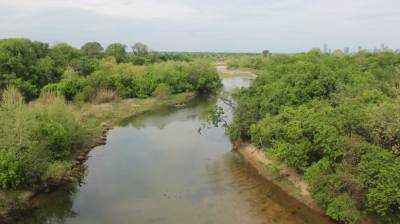The overview
The rezoning request centers on a 21-acre site at 71 Strandtman Cove now home to a Borden Dairy Co. plant. The Borden site is located just off US 183 and East Cesar Chavez Street, hundreds of feet off the Colorado River. It also shares a boundary with the 43-acre Colorado River Park Wildlife Sanctuary.
As currently proposed, the new project would feature 1,400 housing units, a 220-room hotel, 411,000 square feet of office space, a 66,000-square-foot restaurant and 40,000 square feet of retail space.
The project would overshadow other recent East Austin construction including the Plaza Saltillo district near downtown and the 90-foot, 880,000-square-foot Springdale Green office project to the north. The Borden redevelopment could reach up to 120 feet high under conditions approved by the Planning Commission on March 28.
Plans come from Endeavor Real Estate Group, the firm behind other large-scale projects in Austin including 305 South Congress. That landmark high-rise redevelopment is coming to the South Central Waterfront across from downtown at the former Austin American-Statesman headquarters following an extended city review.
What they're saying
In opposition, a handful of community members at the March meeting argued against a project they said could permanently alter the local development and environmental landscape. Those speaking against the plans warned that welcoming a taller mixed-use project to East Austin represents a tipping point that would bring more construction along the mostly undeveloped river corridor between Longhorn Dam and Tesla’s growing factory off Hwy. 130 near the city limit.
"This is definitely a gentrification project in East Austin, and one that will set the precedent going along Colorado River," said Susana Almanza, director of the East Austin social and environmental justice group PODER. "If you’re not aware, they have been buying up the land along Colorado River all the way up to Tesla. And if you let 120 feet, that’s what you’re going to see along that whole corridor along the Colorado River.”
Chris Brown, co-founder of Colorado River Conservancy, expressed concern over intensive construction near the largely untouched stretch of urban waterway he said is an essential area for wildlife including migratory birds.
“This is the sort of first big redevelopment project before the city to think about, what are the standards we want to apply with respect to how that corridor is going to look in 20 or 30 years?" Brown said. "Would you want it to look like downtown, or do we want to preserve the essentially wild and natural character of the river that we have, which is a really exceptionally rare natural asset to have of any city of this size?”

The new project is expected to greatly increase traffic in the east side community, a city analysis found. Daily vehicle trips around the site would jump from less than 500 today to more than 22,000 after development, a nearly 4,700% increase.
“It’s like a bottleneck there," said Daniel Llanes, chair of the Govalle/Johnston Terrace Neighborhood Plan Contact Team. "The scope of this project would already overwhelm the infrastructure that we have here.”
Land-use attorney Richard Suttle, a lobbyist on the rezoning case who also handled the Statesman zoning review, said the development belongs given its location near major corridors and set back from nearby neighborhoods in what is now an industrial and commercial area.
“Because we sit down low at the highway intersection there, we just felt like asking for the 120-foot height and not towering over anybody would not be an imposition," Suttle said during the Planning Commission meeting. "Our attitude was kind of, ‘If not here, then where?’”
Suttle also said the developers could reserve 10% of units in the complex as affordable for those earning up to 60% or 80% of the local median family income. Endeavor may also contribute funds to an East Austin Conservancy program aimed at supporting residents facing displacement.
While no community members spoke in favor of the project, some nearby property owners had expressed their support.
The bottom line
The rezoning eventually passed through the Planning Commission on March 28 over objections from some commissioners who wanted to slow the approval process in line with other large redevelopment proposals.
"A project of this magnitude in its location with all it stands to gain, this really requires more than what’s going on here tonight," Commissioner Jennifer Mushtaler said. "I can’t look at this and see what’s happening on the east side there, the housing issues, the environmental issues, there’s just too much there to rush it through tonight.”
Commissioner Grayson Cox said the project was moving along under a "loophole" and "abuse" of the city's zoning system and should be considered instead as a planned unit development, or PUD, like 305 South Congress and the Brodie Oaks mall. Austin's extensive PUD reviews require more environmental analysis and greater community benefit trade-offs with the city.
City staff said the Borden project outline is not ready to receive in-depth environmental and watershed protection evaluations at this stage of rezoning.
Commissioner Greg Anderson—who motioned in favor of rezoning with a 120-foot height limit, a 60-foot building buffer next to the preserve and a cap of 75% impervious cover on the site—said the project would be a positive fit. His motion was approved 10-3 with Mushtaler, Cox and Commissioner Awais Azhar against.
“Getting 1,400 homes to replace a milk factory seems like a really great thing. ... I definitely like the idea of taller buildings allowed here," Anderson said.
What's next
With its passage through Planning Commission, the rezoning case will likely be heard by City Council in the near future. Council agendas may be viewed here.






